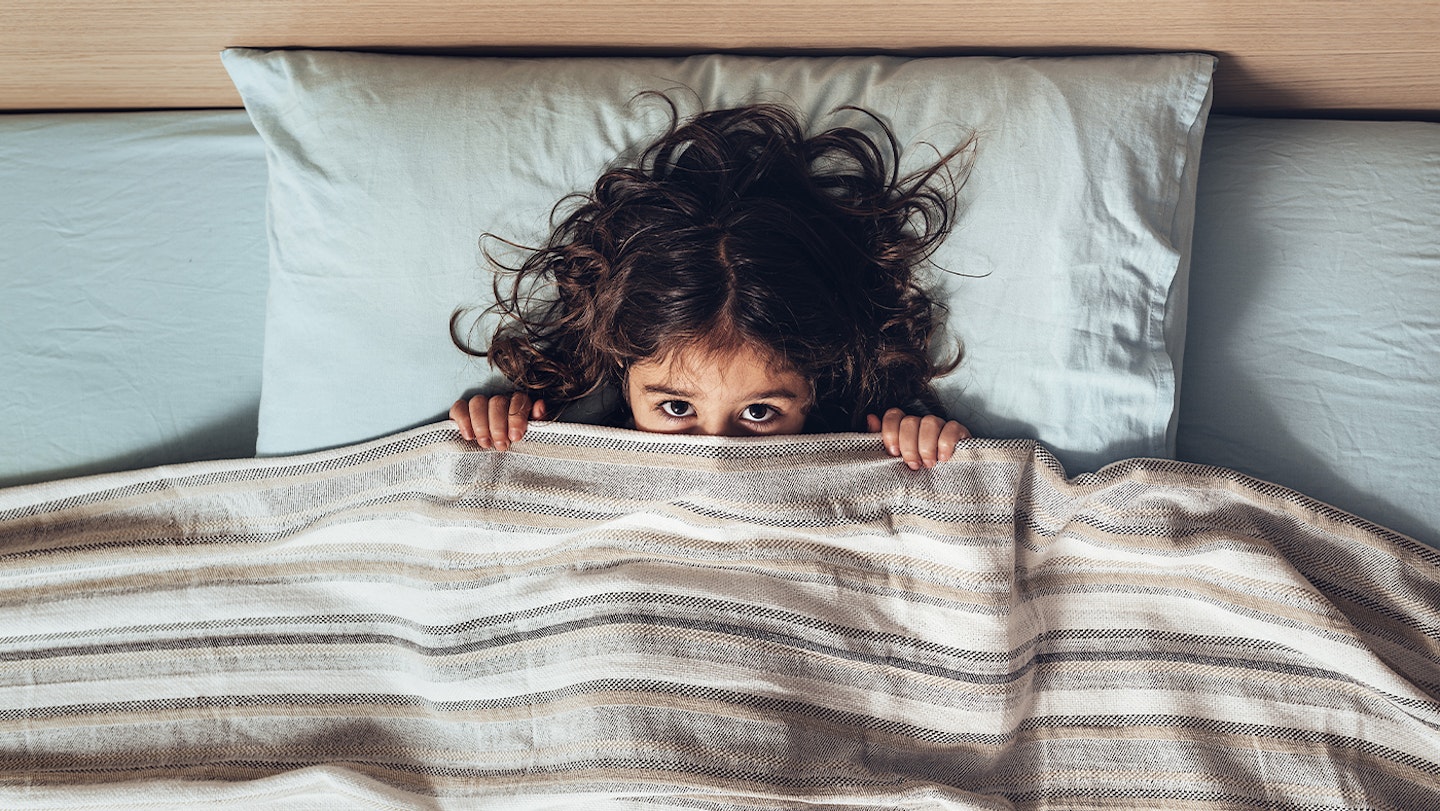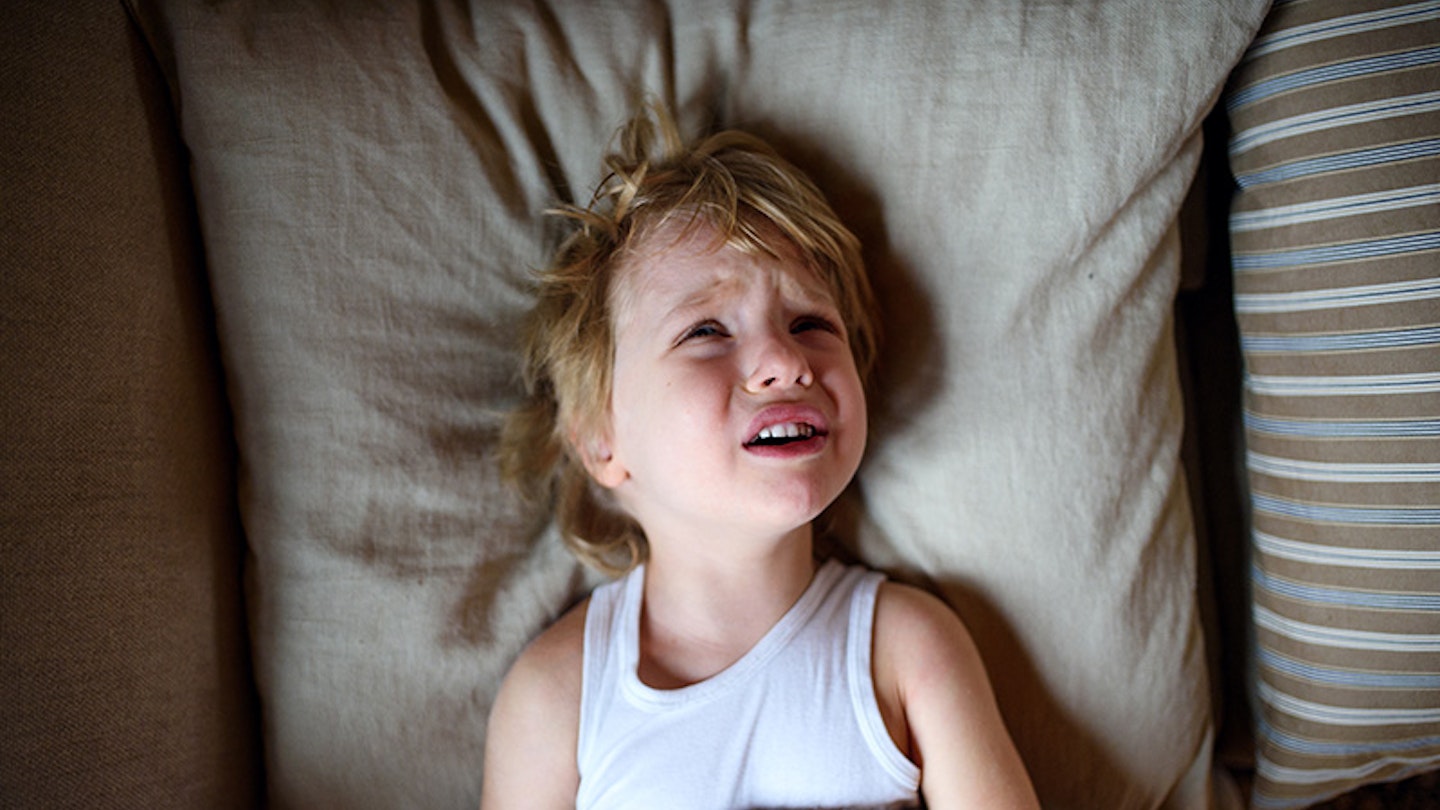First things first, toddler night terrors are often more frightening for parents than children. They’re also very common, with 88 per cent of children suffering a night terror before the age of 11. Night terrors belong to the same group of sleep behaviours as sleepwalking and sleep talking and aren’t harmful to children at all.
We spoke to sleep expert James Wilson AKA The Sleep Geek to understand how to identify a night terror, as opposed to a nightmare or bad dream.
What's the difference between a nightmare and night terror?
During a night terror, little ones may scream, sit upright in bed, cry out, sweat, thrash around and – most disconcertingly for their parents – appear to be wide awake with their eyes wide open. The episodes can last anywhere from a few minutes up to 15 minutes, until your child moves into a different phase of sleep. In extreme cases, they can last up to an hour. In the morning, they won’t remember a thing, but you might well feel drained – and a bit tired!
The key difference, James says, is that “children can remember nightmares but night terrors they don’t recall at all.”
Another difference is that night terrors often strike towards the start of the night during non-REM sleep (deep sleep). Nightmares on the other hand usually happen in the final stages of the night during REM sleep (lighter sleep).
If you're not sure, you can usually tell from your child the next morning. If they're still agitated, recalling what happened in their dream, then it was a nightmare. If you're the one who feels more disturbed about the terror and they seem fine, then it was probably a night terror.
What causes night terrors?
There are a number of different things that can cause night terrors including:
• Tiredness or feeling unwell
• Fever
• A family history of night terrors or sleep walking
• The urge to need a wee at night - this can impact your sleep patterns a lot!
• Going to sleep after watching something scary
• Hearing sudden noises
• Certain medications
• Mental health conditions
Sleep disorders have been on the rise for everyone since the beginning of the pandemic. According to James, our increased anxiety levels can disturb sleep patterns and for our children, lockdowns and not attending their usual settings can impact on how easily they sleep, which is why you may have seen a difference in your child's sleeping habits over the past few years.
“Sleep issues are heightened by stressful situations and for children, sleep problems can occur when there’s a change in routine. We saw it in the first lockdown when children weren’t falling asleep, and then again in January.”
Can babies have night terrors?
Night terrors are most common in toddlers around 3 to 4 years old, however you may notice them in your child as young as 18 months. Night terrors in babies are rare, and their crying at night is usually due to other factors. Nightmares on the other hand can affect both children and adults of any age.
What to do if your toddler is having a night terror
"It might feel unnatural but trying to wake a child from a terror isn’t advised." James says. "Instead, stay with them and wait until they have calmed down and drop off back to sleep. It’s hard to wake a child from a night terror and may agitate them further."
Try to stay calm and wait for them to calm down. Do not talk to them or try to stop them moving around, unless of course there is a risk they may injure themselves or someone else.
Do not try and wake them as they might not recognise you and it may make them more upset.
How to help prevent night terrors in toddlers
According to the NHS, most children grow out of night terrors before they are eight years old, but just how can you break the cycle while they are happening regularly?
James says it possible to ‘re-set’ your child’s sleep rhythm to avoid a terror happening with scheduled awakening. “Night terrors happen at the same time each night. 20 minutes before a night terror is due to begin, go into your child’s bedroom and disturb them. Rustle around for a few minutes just enough so they are almost woken up. This will mean they come out of a sleep cycle and the night terror won’t happen. Do this for five to seven nights to break the pattern.”
Environmental factors can also be a factor. Your child may well be too warm as James tells us: “We overheat our children with heavy duvets, blankets and soft toys in the bed. Temperature can trigger a night terror so it’s worth thinking about that.” It might be worth dressing your little one in thinner pyjamas and keeping the covers light to see whether this makes a difference.

A calm and consistent bedtime routine can also help to soothe children and allow their body temperature to drop so they’re not climbing into bed wired and warm. “Reduce stimulation before bed." James suggests. "Make sure you have a good wind-down routine which will leave your child feeling relaxed ready for bedtime.” A calm bath time and gentle bedtime story can help here, as can dimming the lights and keeping screens to a minimum.
If your child is experiencing night terrors, they may also begin to sleepwalk too. To avoid any accidents, make sure their floor is clear so they don't have a fall in case they do get up. You'll also want to make sure your stair gate is still in place, and that all windows and doors are securely locked.
When to see a GP
If your little one is experiencing night terrors several times a night most nights then speak to a GP. They may also be able to help if they are having nightmares about the same thing repeatedly or if it's starting to impact the whole family's sleep quality and wellbeing.
In some cases, night terrors can be triggered by more serious conditions such as sleep apnea, restless legs syndrome or gastroesophageal reflux disease (GERD). Your doctor will be able to rule out any of these before deciding on the best treatment.
